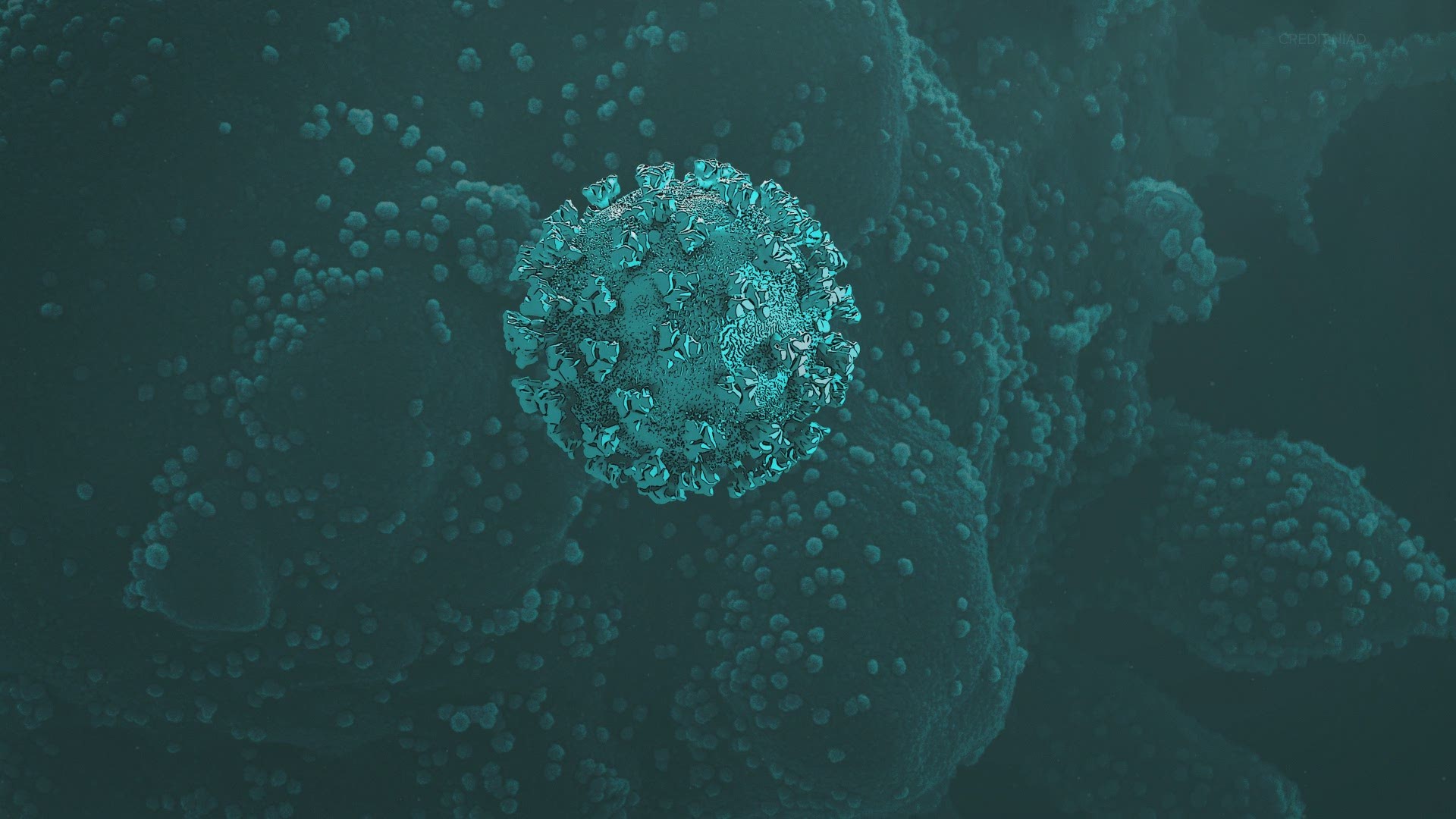You’ve probably seen pictures of the novel coronavirus that causes COVID-19, but what really makes the spiky ball tick?
It’s too tiny to see with the naked eye, so you must think small.
Picture just one strand of hair and stretch it out. Now imagine laying a dozen cells across that strand of hair. That’s about how big some of your lung cells are.
At about a hundredth of the width, the coronavirus is tiny compared to a human lung cell. The potent stuff is even smaller. The coronavirus’ “guts” is a strand of something called RNA, which is similar to our DNA.
The RNA is the virus’ genetic code or the instructions for making copies of the virus. But to make copies, the virus needs something it doesn’t have: a cell.
So, the virus evolved a clever way to get inside your cells.
The key is the outside envelope of the virus and the crown of spikes that gives coronavirus its name. The crown of spikes is not decorative, but an elaborate disguise. It’s a fraud the virus uses to trick its way into your cells and create copies.


Think of your cell like a factory surrounded by a fortress wall. The “factory” inside the cell makes stuff your body needs, and all over the outer walls are special doors. Each “door” finds and pulls in specific stuff the factory needs.
This novel coronavirus uses one door in particular called the ACE2 receptor, which grabs onto proteins and brings them into the cell.
The spike on this novel coronavirus looks like the real deal, but it’s a trojan horse. Once the receptor grabs the spike, the virus can fuse with your cell’s outer wall, and then slip through it almost like a ghost.
Once inside the human cell, the virus starts uncoating and releases its RNA. This starts a process that ends up using parts of the “factory” in your cell to make new copies of the virus. And then more copies and more copies.
Those new copies will start leaving the cell and can then travel to other parts of your body to infect other cells.
Scientists are studying the details of every step of the virus’ life cycle. If we can find a way to interrupt any part of that cycle, it could lead to a new treatment and slow, or even stop, the spread.

